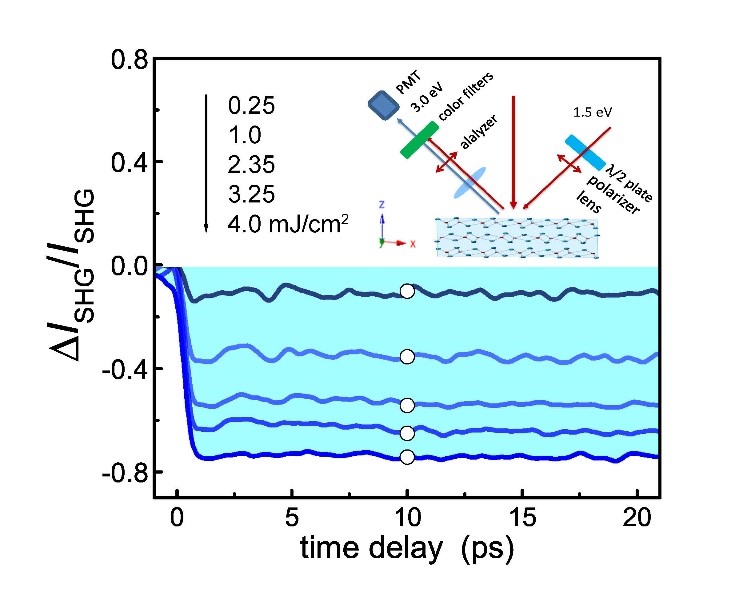Physical Review X reports Nanlin Wang and collaborators’ experimental progress of light induced sub-picosecond lattice symmetry switch in a two-dimentional topological material MoTe2
Creating new states of matter in materials and manipulating their phases via external stimuli (such as electric field, magnetic field, high pressure, doping, et al.) are research frontiers in the field of condensed matter, and have huge application prospects. Recent development of ultrashort laser pulses allows for optical control of structural and electronic properties of complex quantum materials. The layered transition metal dichalcogenide MoTe2, which can crystalize into several different structures with distinct topological and electronic properties, provides possibilities to control or switch between different phases. Recently, Nanlin Wang and collaborators report on a laser-induced sub-picosecond structural transition between two semimetal phases in MoTe2 by using ultrafast pump-probe and time-resolved second harmonic generation spectroscopy.
MoTe2 is an example showing different crystal symmetries depending on the stacking geometry of MoTe6 octahedral layers. MoTe2 changes from an orthorhombic T_d phase to monoclinic 1T’ phase as temperature increases to 250K. The T_d phase breaks the inversion symmetry of the structure and hosts type Ⅱ topological Weyl fermions (where the valence and conduction bands cross in single points). By contrast, the inversion symmetry is preserved in 1T’ phase. Nanlin Wang’s group find that intense near-infrared pulses can indeed drive MoTe2 crystal from T_d to 1T’ phase within a time scale of sub-picosecond. The phase transition is most clearly characterized by the dramatic change of the shear mode oscillation in time-resolved reflectivity change and the intensity loss of second harmonic generation. Further experiments rule out the possibility of laser heating effect for the phase transition.
The present study represents the first realization of ultrafast sub-picosecond switch between T_d phase and 1T’ phase in bulk MoTe2 among all possible tuning methods. The experiments provide an illustration of ultrafast manipulation of the topological properties of Weyl semimetals, thus enabling potentially practical applications for topological switch device with ultrafast excitations. This work has been published in Physical Review X (Phys. Rev. X 9, 021036 (2019)). The leading author of the paper is Mengyao Zhang, a doctoral student of Nanlin Wang’s group in ICQM. Nanlin Wang and Tao Dong are the corresponding authors. The single crystal samples are provided by Jian Wang’s group, also at ICQM. This work was supported by the National Natural Science Foundation of China, the National Key Research and Development Project.

Figure: Pump induced SHG time traces of MoTe2 at selected fluences at T=10 K. The graph shows that as the laser fluence increases, the signal of the second harmonic of the sample drops significantly. The inset is a time-resolved schematic diagram of second harmonic detection